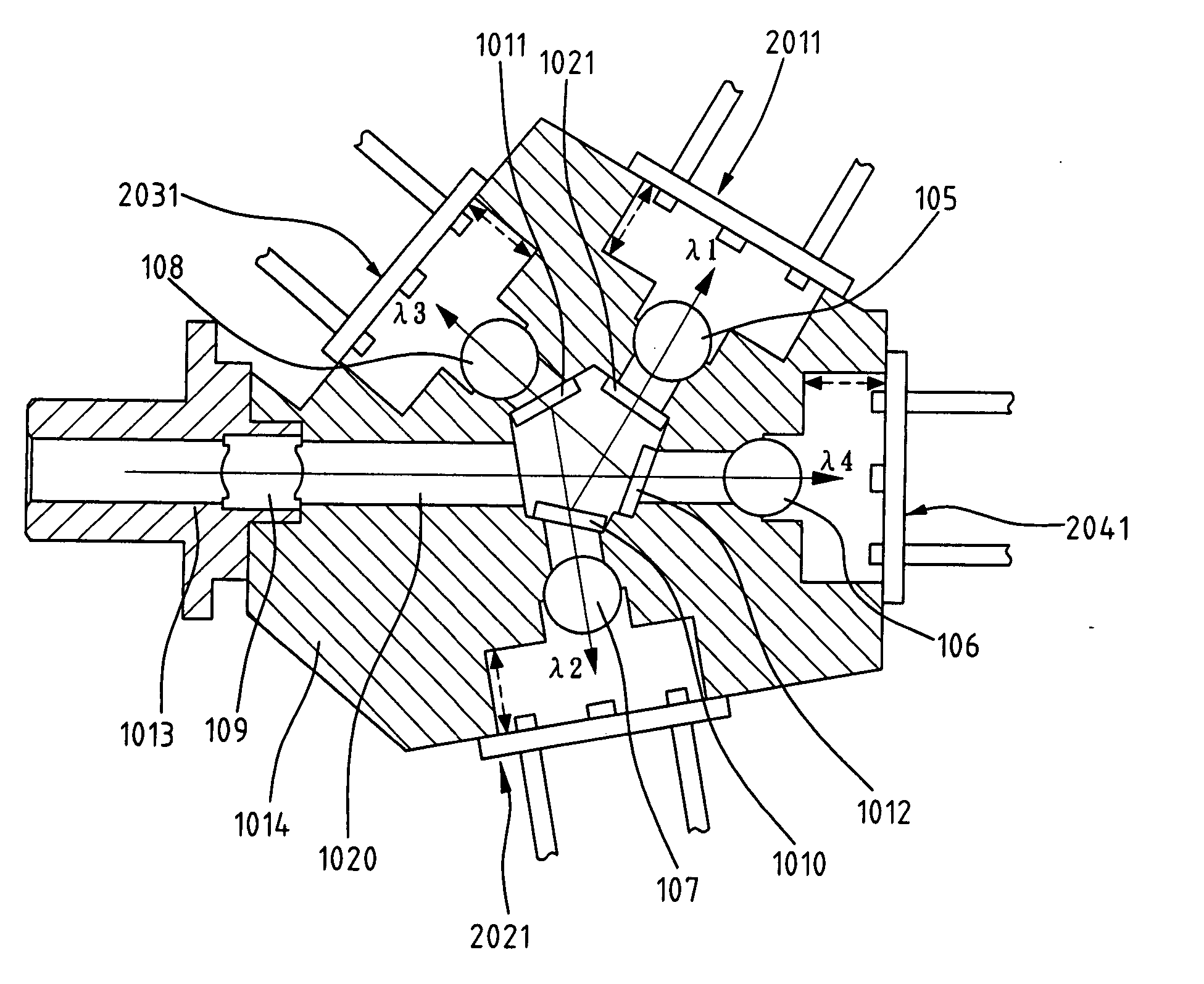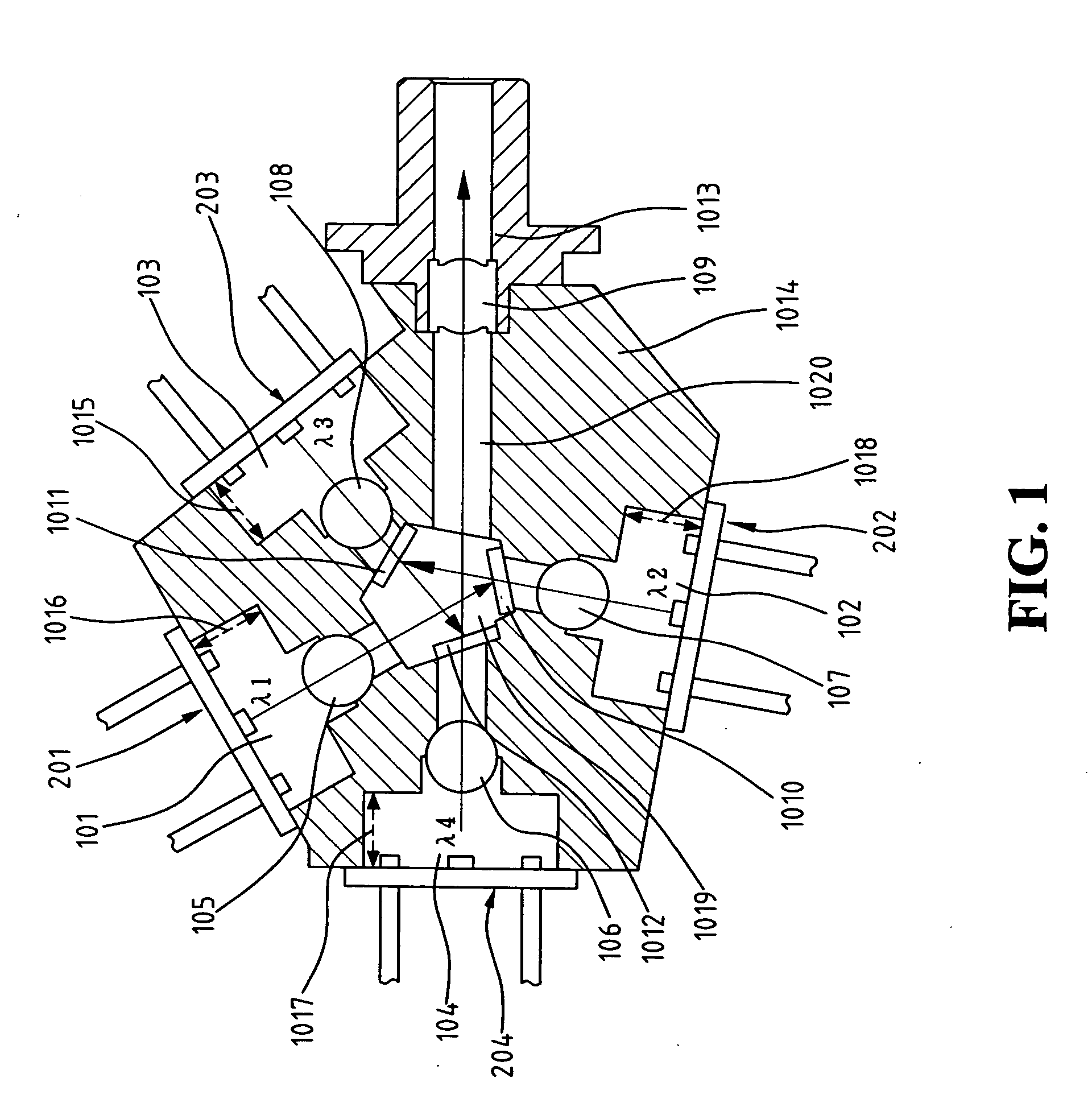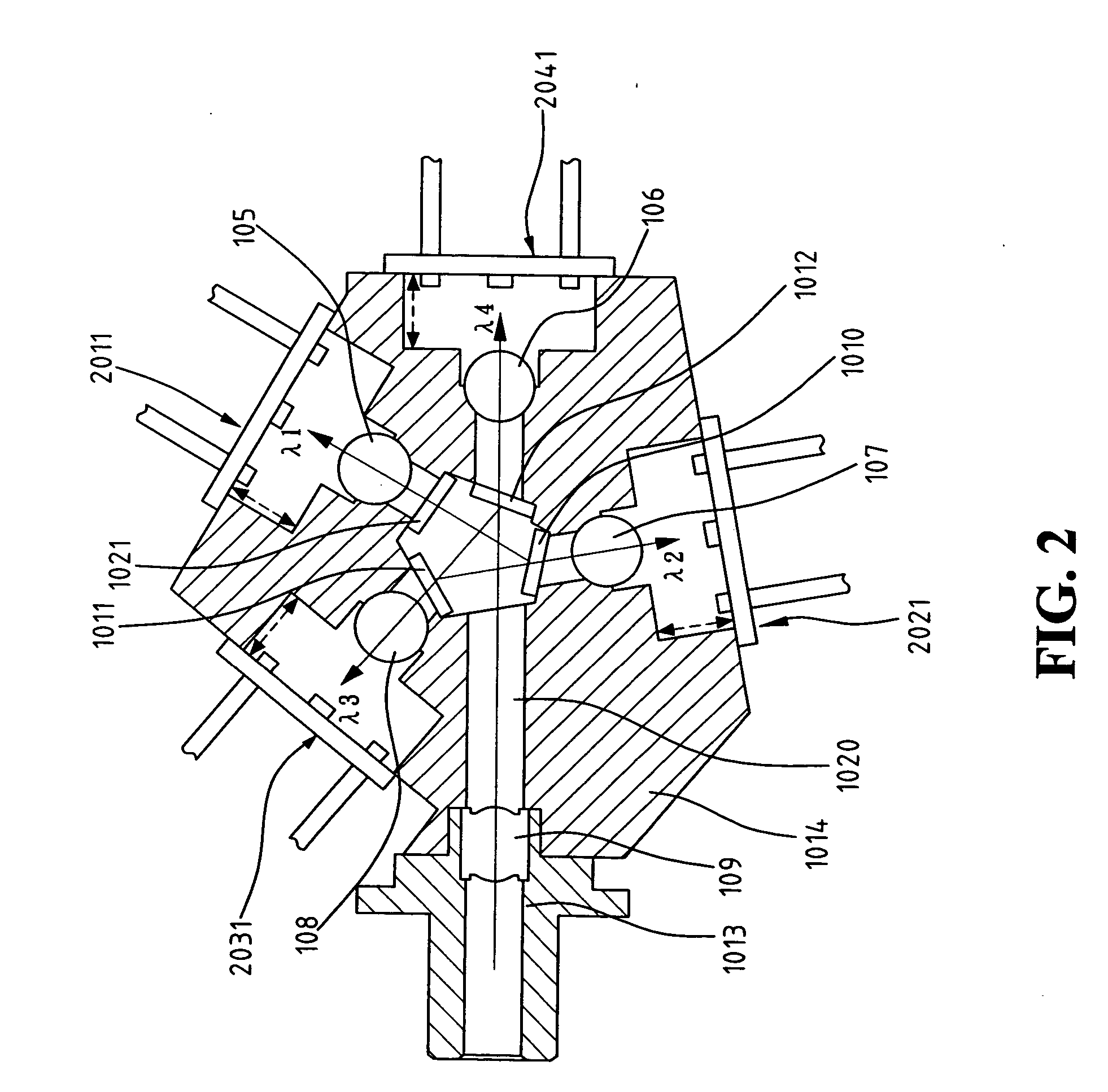Multi-wavelength optical transceiver subassembly module
a technology of optical transceivers and sub-assemblies, applied in the field of multi-wavelength optical transceivers, can solve the problems of increasing manufacturing costs, power consumption, and affecting the coupling efficiency of the system, and achieve the effect of enhancing coupling efficiency
- Summary
- Abstract
- Description
- Claims
- Application Information
AI Technical Summary
Benefits of technology
Problems solved by technology
Method used
Image
Examples
Embodiment Construction
[0037] With reference to the drawings and in particular to FIG. 1, an optical transmitter constructed in accordance with the present invention comprises a main body 1014 in which first, second, third and fourth alignment slot 101, 102, 103, 104 are defined. Also defined in the transmitter main body 1014 is a central cavity 1019 that is in communication with each alignment slot 101-104 via a passageway (not shown) that has an axis. The alignment slots 101-104 are of predetermined depths 1016, 1018, 1015, and 1017 to match laser beams of different wavelengths. Each alignment slot 101-104 receives a laser diode device 201, 202, 203, and 204 that a laser beam carrying an optical signal transmits along the associated passageway toward the central cavity 1019. A lens 105, 107, 108, 106, such as a spherical lens, an aspheric lens, and a set of lenses, is retained in each passageway to collimate the laser beam. If desired, surfaces of the lens 105-108 are coated with anti-reflective layers ...
PUM
 Login to View More
Login to View More Abstract
Description
Claims
Application Information
 Login to View More
Login to View More - R&D
- Intellectual Property
- Life Sciences
- Materials
- Tech Scout
- Unparalleled Data Quality
- Higher Quality Content
- 60% Fewer Hallucinations
Browse by: Latest US Patents, China's latest patents, Technical Efficacy Thesaurus, Application Domain, Technology Topic, Popular Technical Reports.
© 2025 PatSnap. All rights reserved.Legal|Privacy policy|Modern Slavery Act Transparency Statement|Sitemap|About US| Contact US: help@patsnap.com



